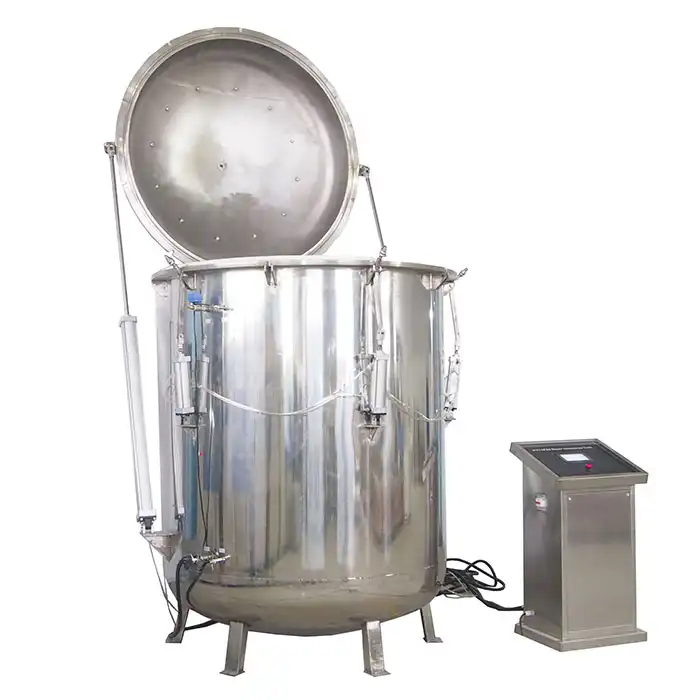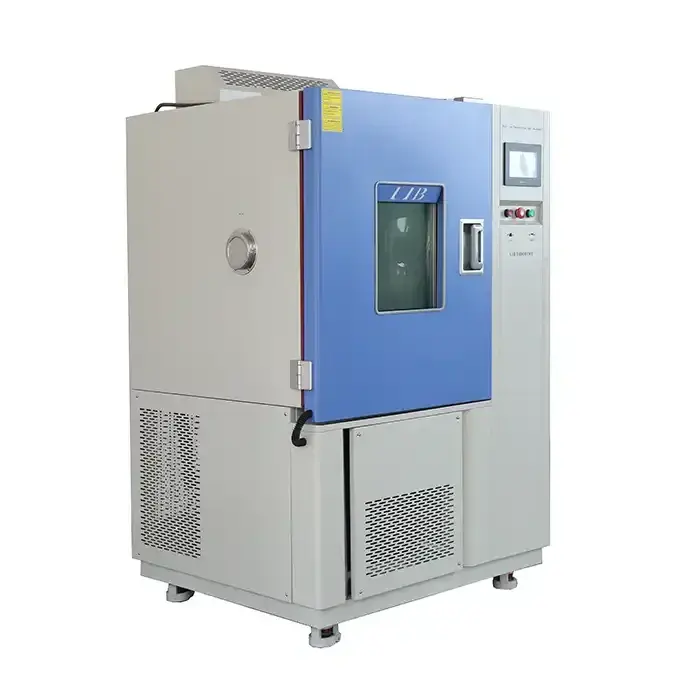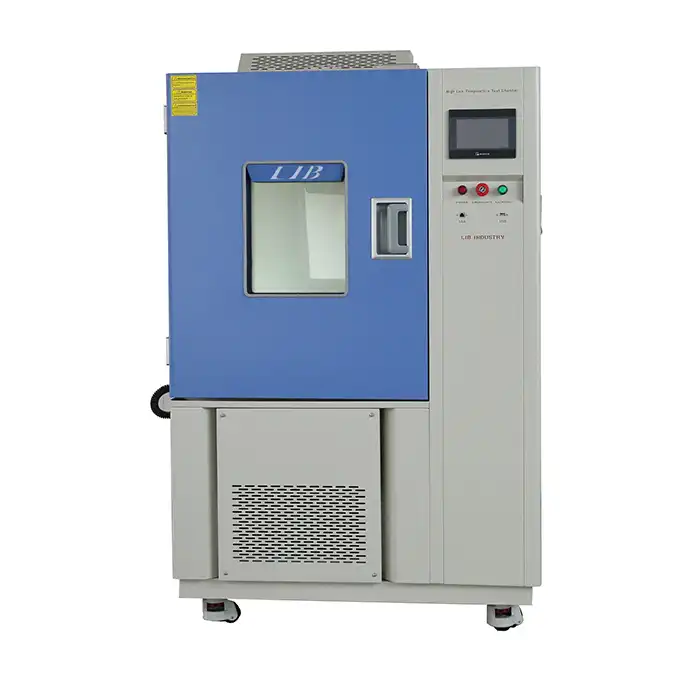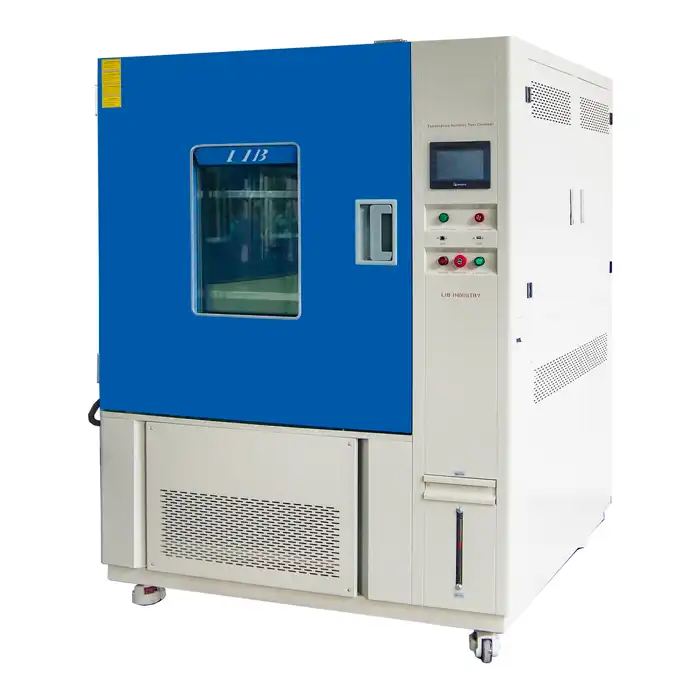How to Use a Benchtop Climate Test Chamber?
Benchtop climate test chambers are indispensable tools in various industries, from electronics to pharmaceuticals. These compact yet powerful devices simulate diverse environmental conditions, allowing researchers and manufacturers to assess product performance under controlled temperature and humidity levels. In this comprehensive guide, we'll explore the intricacies of utilizing a benchtop climate test chamber effectively, ensuring you harness its full potential for your testing needs.

♦The Basics of Benchtop Climate Test Chambers

Components and Functionality
Benchtop climate test chambers comprise several key components, including a temperature control system, humidity generator, and circulation fan. The temperature control system typically utilizes a compressor and heater to achieve desired thermal conditions. The humidity generator, often a water reservoir with heating elements, creates the necessary moisture levels. The circulation fan ensures uniform distribution of temperature and humidity throughout the chamber.
Types of Tests Performed
These versatile chambers accommodate a wide array of tests, such as thermal cycling, humidity resistance, and accelerated aging. Thermal cycling evaluates a product's ability to withstand rapid temperature fluctuations. Humidity resistance tests assess how materials react to varying moisture levels. Accelerated aging simulates long-term environmental exposure in a condensed timeframe, providing valuable insights into product longevity.
Selecting the Right Chamber
Choosing an appropriate benchtop climate test chamber depends on many factors, including the size of test specimens, required temperature and humidity ranges, and test duration. Consider the chamber's interior dimensions, temperature extremes, humidity capabilities, and programmable features. Opt for a chamber that not only meets your current testing requirements but also allows for future expansion of your testing protocols.
♦Preparing for Testing with a Benchtop Climate Test Chamber
Calibration and Maintenance
Calibration and maintenance are vital to achieving accurate and reliable test results in your benchtop climate test chamber. It is recommended to engage certified technicians for periodic calibration, ideally on an annual or bi-annual basis. Additionally, establishing a preventative maintenance schedule is essential; this should include regular cleaning of the chamber’s interior, thorough checks of the seals to prevent air leaks, and inspections of all electrical connections to ensure safety and functionality. By investing time and resources into proper upkeep, you not only enhance the longevity of the chamber but also ensure it consistently performs at its best, leading to trustworthy results in your testing processes.
Sample Preparation
Sample preparation is critical for achieving reliable and meaningful results in testing. Begin by thoroughly cleaning and drying all specimens to eliminate any contaminants that could affect the outcomes. When placing samples in the chamber, arrange them to ensure adequate air circulation, which promotes uniform exposure to the simulated conditions. Utilize suitable fixtures or racks to securely hold the items in place, preventing any movement during testing. This careful handling not only helps maintain the integrity of the specimens but also ensures that the results accurately reflect the conditions being tested.
Programming Test Parameters
Programming test parameters is an essential step in utilizing modern benchtop climate test chambers, which often come equipped with intuitive interfaces. Take the time to familiarize yourself with the control panel and accompanying software to ensure efficient operation. When inputting the desired temperature and humidity setpoints, also consider ramp rates and dwell times for a comprehensive testing approach. Many chambers allow for the development of intricate test profiles featuring multiple stages, which is particularly beneficial for in-depth environmental stress testing. Always double-check all programmed parameters before starting the test to minimize the risk of errors that could compromise your results.
♦Conducting Tests and Analyzing Results
Monitoring and Data Collection
Monitoring and data collection are critical during the testing process to ensure accurate results and assess the specimens' responses effectively. Keep a close eye on the chamber's performance, noting any deviations from the set parameters. Make full use of the chamber's built-in data logging features to document temperature and humidity fluctuations in real time. For a more thorough analysis, consider integrating additional sensors or data acquisition systems that can capture more detailed data. Additionally, conducting regular visual inspections of the samples can yield valuable qualitative insights, enhancing your understanding of how the specimens are responding to the controlled environment.
Interpreting Test Results
Interpreting test results from benchtop climate test chamber experiments involves a detailed and thoughtful analysis. Begin by comparing the collected data to established acceptance criteria or relevant industry standards to determine compliance. As you review the results, pay attention to any patterns or anomalies that may reveal product weaknesses or highlight areas needing enhancement. Additionally, reflect on how any deviations from the intended test conditions might influence the overall findings. Understanding these factors is crucial for making informed decisions regarding product design and quality improvements, ensuring that the final outcomes meet both performance expectations and safety standards.
Refining Test Protocols
Refining test protocols is essential for enhancing the efficacy of your testing processes. Leverage the insights gathered from each experiment to make informed adjustments to your methodologies. This may involve fine-tuning parameters such as temperature extremes, humidity levels, and cycle durations to better align with observed results and specific product requirements. By continuously optimizing your testing approaches, you can maximize the value derived from your benchtop climate test chamber. This proactive strategy not only leads to more relevant data, but also significantly contributes to improved product development and quality assurance, ensuring that your products meet high standards of performance and reliability.
♦Conclusion
Mastering the use of a benchtop climate test chamber is an ongoing process that combines technical knowledge with practical experience. By understanding the fundamentals, preparing meticulously, and analyzing results thoughtfully, you can leverage these powerful tools to enhance product reliability and performance across various environmental conditions.
♦Contact Us
If you're looking to elevate your environmental testing capabilities or need expert guidance on implementing benchtop climate test chambers in your research or manufacturing processes, don't hesitate to reach out. Contact us at info@libtestchamber.com for personalized solutions and support tailored to your specific testing requirements.
References
1. Smith, J. (2022). Environmental Testing Techniques: A Comprehensive Guide. Journal of Product Quality Assurance, 45(3), 78-92.
2. Johnson, M., & Brown, L. (2021). Advancements in Benchtop Climate Chamber Technology. Environmental Testing Today, 18(2), 112-125.
3. Williams, R. (2023). Optimizing Test Protocols for Climate Chambers. International Journal of Reliability Engineering, 37(1), 45-59.
4. Garcia, A., & Lee, S. (2022). Best Practices in Sample Preparation for Environmental Testing. Materials Testing Quarterly, 29(4), 201-215.
5. Thompson, E. (2021). Data Analysis Techniques for Climate Chamber Test Results. Journal of Environmental Stress Testing, 14(3), 167-180.
6. Chen, H., & Patel, N. (2023). Calibration and Maintenance of Benchtop Climate Test Chambers. Metrology and Measurement Systems, 30(2), 289-302.








.jpg)
.webq.jpg)
